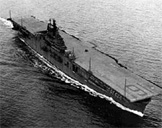|
Fred Gwynn's Chapter 4 |
||||||
 |
||||||
 |
||||||
| Looking back at the island, I saw planes burning on the runways and lots of gun-fire coming up at our scattered planes. Then an awful thought struck me. I still had three bombs to get rid of, and there was the squadron streaking of to the rendezvous-point! We were supposed to make the first run good enough to drop all our bombs. I considered jettisoning my load in the water, but it wasn't a very attractive alternative. So I turned around and started in again. Just to show what luck is, as I reached the island and started down over the runway 1300 feet, four of our fighters came screaming down over me, strafing the gun positions so that they didn't fire at us. Thus protected, I managed to fly straight down the runway, drop the bombs, and continue down the length of Betio Island, while my gunner and radioman strafed to their heart's content. They even begged me to go back for more strafing, but I figured it was time to go. I had a good enough story and I wanted to think it over and polish it up a bit.
Right now I've got to apologize for introducing my tale and no one's else into the story of Torpedo 16. But the fact is that is hard to remember what happened to the other boys, except in certain colorful cases. I remember that Buzzy Thomas made a photographic mission over adjacent Apanema Atoll, finding no Japanese defenses, but demolishing part of a bridge with his bombs. I remember that the Skipper and Bill Linn made it back virtually unscathed; good piloting or extremely lucky or a combination of both. I remember that a lot of guys on the night attack though, got nicked by Jap AA; Norm White had 14 holes in his plane, and Gene Ternasky, Mac McLellan, Harry Minarik, and Dick Scheele had some holes. I remember that Massey, our enlisted photographer, was flying in an SBD piloted by Ensign T.A. Brown that got lost and never came back. I remember that Robinson, a fighter-pilot, and Prandini, a dive-bomber, bent on accomplishing the maximum amount of strafing, got shot down and never returned. Some of our boys who visited Tarawa after it passed to the Allies, saw the remains of Prandini's plane. So that's as much of the attack as I can tell about,except that the task force was credited officially with destroying about 75% of the target. Months later in a captured diary kept by a Jap artilleryman on Tarawa, we found out that we had wiped out all their ammunition dumps and that the garrison was standing by for invasion as we chugged away. It's funny about these attacks. If you set a lot of fires and burn up planes and buildings, you get the impression that you have completely obliterated a Japanese base. Then you come back the next day and they throw up the fiercest AA barrage you've ever seen. We didn't know, of course, that Tarawa was out of ammunition when we left. We do know that by the time the Marines went ashore in November, Tarawa had become one of the strongest fortresses in the Pacific. We pilots had assumed that it would be a pushover, God forgive us. So we'd made our first attack and were pretty happy. Capt. Stump was pleased with his raid, in fact, so pleased, that he managed to sail down a few miles across the Equator so that we could all be shellbacks. On September 21st, about 80% of the ship's personnel went through the strenuous initiation that officially made them sea-going men. It was a great boost to morale, and we returned to Pearl Harbor with all the airs of conquering heroes and hardened mariners. Boy, it was a good feeling! |
||||||
|
End of Page 3 of Chapter 4 — Go to Page 4 Page — 1 — 2 — 3 — 4 — this chapter you may go to Introduction — Table of Contents Chapter — 1 — 2 — 3 — 4 — Epilogue — or Go to the Lexington Stories Cover Page Or Home - Contact Us - Cold War Hist. - 91st SRS Hist. - Stardust 40 Mission Story |
||||||